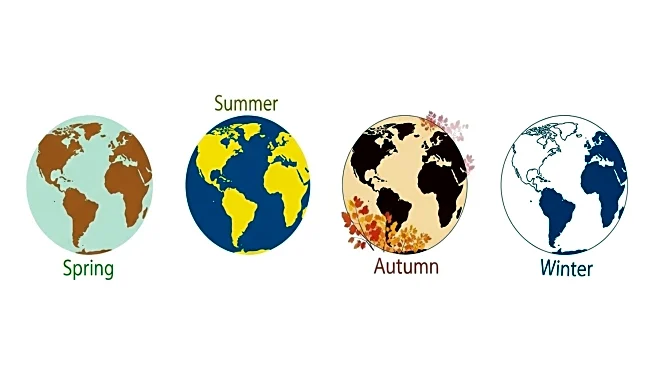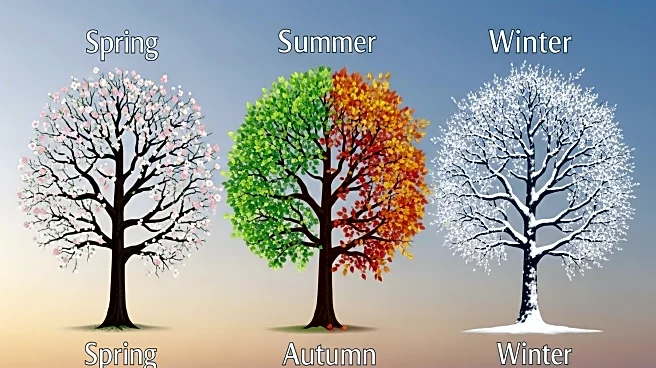What's Happening?
A new study published in Nature reveals that Earth's seasonal cycles are more complex than previously understood. Using satellite imagery, researchers have identified 'hotspots' of seasonal asynchrony, where the timing of seasonal cycles varies significantly between nearby locations. This phenomenon has ecological, evolutionary, and economic implications, affecting biodiversity and resource availability. The study highlights the intricate patterns of plant growth cycles and their impact on ecosystems.
Why It's Important?
The discovery of seasonal asynchrony challenges traditional views of Earth's seasonal cycles and has significant implications for ecology and biodiversity. Understanding these patterns can help predict the distribution of species and their evolutionary trajectories. The findings also have economic implications, affecting agriculture and resource management. By identifying regions with out-of-sync seasons, scientists can better understand the impact of climate change and develop strategies for conservation and sustainable development.
Beyond the Headlines
The study's findings suggest that regions with out-of-sync seasons may contribute to high levels of biodiversity due to genetic divergence among species. This has profound implications for conservation efforts and the understanding of evolutionary processes. The research also highlights the importance of satellite technology in monitoring ecological changes and informing policy decisions. As climate change continues to alter global weather patterns, understanding seasonal cycles becomes crucial for predicting future impacts on ecosystems and human activities.











